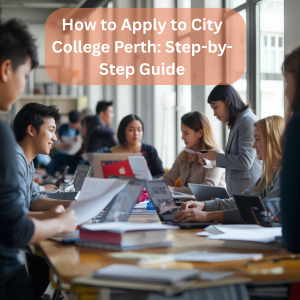Introduction – Why You Should Care
If you are thinking about moving to Australia for work or study, one of the most important things you need to know is the Skilled Occupation List (SOL). This list is like a roadmap for international students and skilled workers—it tells you which jobs the Australian government is looking for.
Knowing whether your job is on the list can save you time, money, and confusion. It can determine if you are eligible for a work visa, permanent residency, or even specific training opportunities. The good news is, checking your occupation is easier than you think. In this guide, I will walk you through simple, step-by-step instructions that anyone can follow.
What Is the Skilled Occupation List in Australia
The Skilled Occupation List (SOL) is a list of jobs that the Australian government considers important for the country’s economy. These are jobs where there is a shortage of skilled workers.
Here’s what you should know:
-
It covers a wide range of industries—IT, healthcare, construction, cookery, and more.
-
Only jobs on this list qualify for certain skilled visas, like the subclass 189, 190, or 491.
-
Each occupation has a code and a assessing authority, which checks if you have the right skills and experience.
Think of it like a guide. If your job is listed, it opens doors to opportunities in Australia. If it’s not, you may need extra steps to qualify.
Step by Step – How to Check If Your Job Is on the List
Visit the Official Australian Government Website
The safest way to check is on the Department of Home Affairs website. Avoid random websites—they may have outdated information.
Steps:
-
Navigate to Visas > Skilled Migration > Skilled Occupation Lists
Search for Your Occupation Name or Code
Every occupation on the list has a standard code. Use the search feature to find your job title. Make sure you use the correct Australian job title—it might be slightly different from your home country.
Example:
-
“Chef” in your country may be listed as Cook (ANZSCO 351311) in Australia.
-
“Software Developer” might be listed under Software Engineer (ANZSCO 261313).
Check Which Visa Subclass Your Job Is Linked To
Once you find your occupation, check which visas you are eligible for. Some jobs are eligible for short-term visas, while others qualify for permanent residency visas.
Confirm the Assessing Authority for Your Profession
Each occupation has an assessing authority. This is the organization that checks whether your qualifications and experience meet Australian standards.
Example:
-
Engineers: Engineers Australia
-
Chefs/Cooks: VETASSESS
-
IT Professionals: ACS (Australian Computer Society)
Contacting the assessing authority early can save delays later.
Why It’s Important for International Students and Migrants

If you are studying in Australia, knowing whether your course aligns with the SOL is critical. For example:
-
A Certificate III or IV in Commercial Cookery may help you qualify for cookery-related visas.
-
A Diploma of Leadership and Management may strengthen your skills but might not be on the SOL directly.
Understanding the SOL early helps you plan your study, work experience, and visa applications efficiently.
Common Mistakes People Make When Checking the List
-
Using Outdated Lists – The government updates the SOL regularly. Always check the latest version.
-
Confusing Short-Term and Long-Term Lists – Some jobs are only eligible for short-term visas.
-
Not Checking Assessment Body Requirements – Even if your occupation is listed, your skills need approval from the correct authority.
-
Assuming Your Job Title Matches Exactly – Always check the official Australian title and code.
What to Do If Your Job Is Not on the List
Don’t panic if your occupation isn’t listed:
-
Look for related occupations on the list. For example, “Baker” may be related to “Cook.”
-
Consider state or territory lists—some states have additional occupations for regional visas.
-
Explore further study or vocational courses to qualify for listed occupations.
City College offers courses in areas like automotive technology, IT, hospitality, and management, which can align with certain skilled occupations. This can be a smart way to plan your future in Australia.
Final Thoughts
Checking whether your job is on the Skilled Occupation List is an essential step for anyone planning to work or study in Australia. By following the steps above, you can save time, avoid mistakes, and make informed decisions about your visa and career path.
Remember, the SOL is updated regularly, so stay informed and plan carefully. Your future in Australia starts with the right information.
FAQs
How often is the Skilled Occupation List updated?
It is usually updated every few months. Always check the Department of Home Affairs website for the latest version.
Can my job be added later if it’s not there now?
Yes. The government may add occupations based on demand and skill shortages.
Do all visas use the Skilled Occupation List?
No. Only certain skilled visas require your job to be on the SOL, like subclass 189, 190, and 491.
How do I know which assessing authority to contact?
The list on the official website shows the assessing authority for each occupation. Contact them directly to check if your qualifications meet Australian standards.




